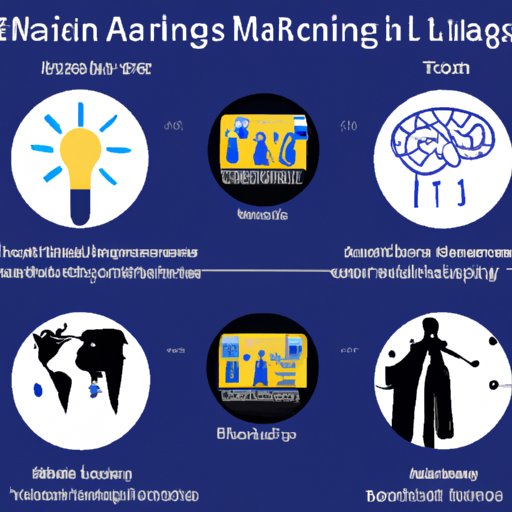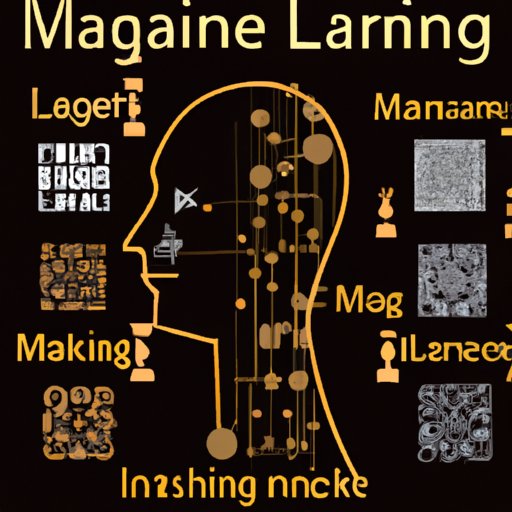Introduction
Machine learning and artificial intelligence (AI) have been two of the most revolutionary advancements in technology over the past decade. Both are powerful tools for automation, analysis, and predictive insights that can help businesses and individuals make decisions more efficiently. However, it is important to understand the differences between these two technologies and how they interact with each other.
Simply put, machine learning is a subset of AI which refers to the ability of computers to learn from data without being explicitly programmed. AI, on the other hand, is a broader term encompassing both cognitive computing and machine learning, and is the science of creating intelligent machines that can reason, problem-solve, and act autonomously.

Use Cases of Machine Learning and Artificial Intelligence
The primary use case of machine learning is to enable computers to detect patterns in data. For example, machine learning is used to power facial recognition technology, which can be used to identify people through their faces. It is also used in medical diagnosis and natural language processing, which allows computers to understand human speech and respond accordingly.
AI, on the other hand, is used to build systems that can think and act like humans. For example, AI can be used to create autonomous vehicles that can drive themselves or robots that can interact with humans. AI is also used to develop virtual assistants that can answer questions and provide personalized recommendations.

Comparison of Machine Learning and Artificial Intelligence Algorithms
In order to understand the differences between machine learning and artificial intelligence, it is important to understand the different types of algorithms used in each. Machine learning algorithms are typically supervised or unsupervised. Supervised algorithms require labeled data, while unsupervised algorithms work with unlabeled data. AI algorithms, on the other hand, can be divided into three main categories: rule-based, neural network, and genetic algorithms.
Rule-based algorithms are based on logical rules and are used to solve problems such as playing chess or solving mathematical equations. Neural networks are modeled after the human brain and are used to recognize patterns in data. Genetic algorithms are used to optimize solutions by simulating the process of natural selection.
Applications of Machine Learning and Artificial Intelligence
Machine learning and AI are used in a variety of applications across different industries. In the financial services industry, machine learning is used to detect fraud and analyze customer behavior. In healthcare, AI is used to diagnose diseases and develop personalized treatments. In manufacturing, machine learning is used to automate processes and improve efficiency.
AI is also used in marketing to develop targeted advertising campaigns and personalize customer experiences. In retail, machine learning is used to predict customer demand and recommend products. In education, AI is used to develop personalized learning plans and assess student performance.

Impact of Machine Learning and Artificial Intelligence on Our Lives
The impact of machine learning and AI on our lives is undeniable. Businesses are able to increase their productivity and profitability through the use of these technologies. They are also able to reduce costs and improve customer service. On the consumer side, machine learning and AI are making our lives easier by automating mundane tasks and providing us with personalized recommendations.
At the same time, there are some concerns about the potential misuse of these technologies. There is the risk of privacy violations, bias, and manipulation. As these technologies become more pervasive, it is important to ensure that they are used responsibly and ethically.
Conclusion
In conclusion, machine learning and artificial intelligence are two distinct technologies that have revolutionized the way we live and work. Machine learning is a subset of AI which focuses on pattern recognition, while AI encompasses both cognitive computing and machine learning. Both technologies are used in a variety of applications across different industries and have had a significant impact on our lives.
It is important to understand the differences between machine learning and artificial intelligence in order to effectively utilize them. As these technologies continue to evolve, it is essential to ensure that they are used responsibly and ethically.
(Note: Is this article not meeting your expectations? Do you have knowledge or insights to share? Unlock new opportunities and expand your reach by joining our authors team. Click Registration to join us and share your expertise with our readers.)
